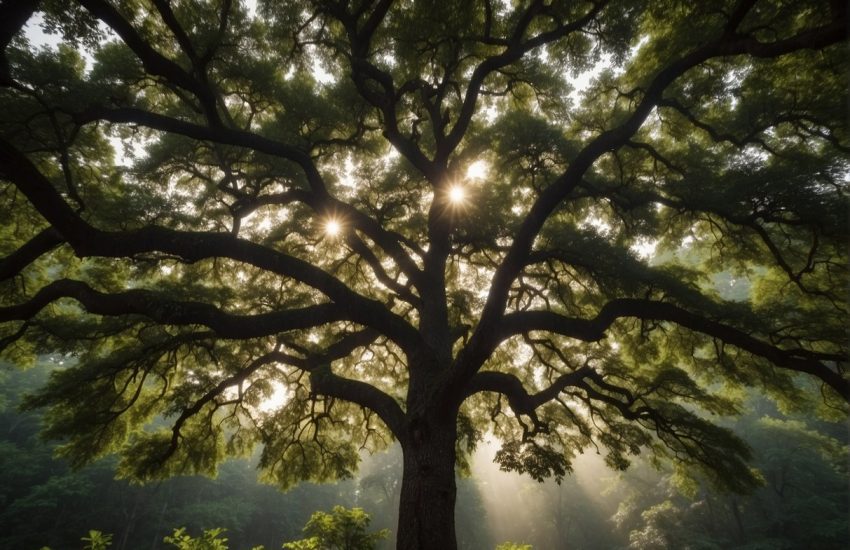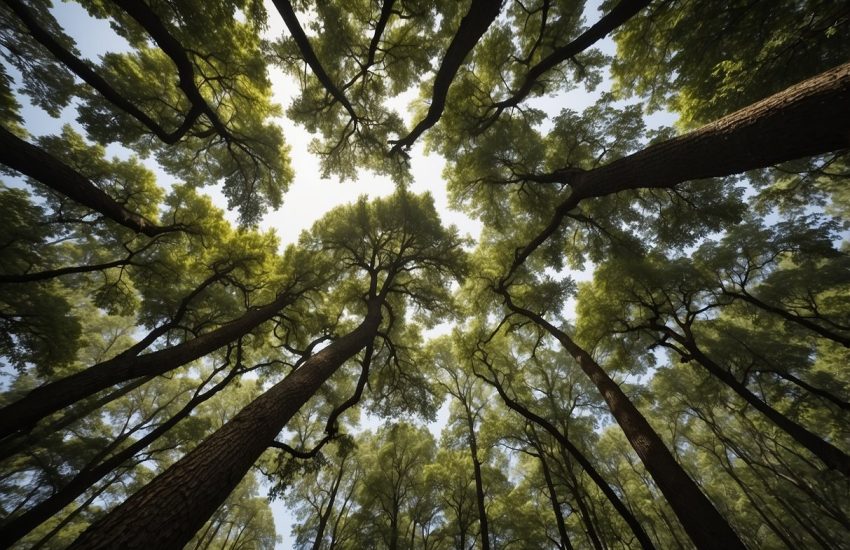The Most Beautiful Ornamental Trees to Grow in Idaho
Any garden is incomplete without ornamental trees. These are grown for their visual appeal rather than their ability to produce fruits or vegetables. As a result, they require less pruning and fertilizer than other types of plants. They can act as windbreaks, provide shade and protect against erosion. In addition, ornamental plants help to attract bees and other pollinators, which are essential for the health of your garden. When choosing ornamental plants for your garden, selecting species that are well-suited to your climate and soil type is important. With proper research, you can identify plants well-suited for your locality. Here are ornamental trees that will thrive in Idaho.
Washington Hawthorn (Crataegus Phaenopyrum)
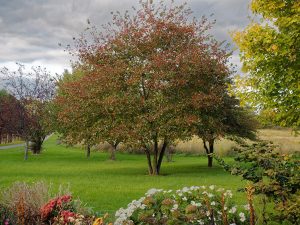
The Washington Hawthorn (Crataegus Phaenopyrum) is a deciduous tree native to the eastern United States. It typically grows to be between 15 and 25 feet tall, with a spreading canopy of 20 to 30 feet. The tree has dark green leaves that are 3 to 5 inches long, and it produces white or pink flowers in the springtime. The tree’s fruit is small and round, with a red or orange hue. The Washington Hawthorn is a hardy tree that thrives in a variety of soil types and climates. It prefers full sun but can also tolerate partial shade. To grow a Washington Hawthorn, plant the tree in an area that receives at least six hours of sunlight each day. The tree can be grown from seed, but it is also available as a potted plant in many nurseries. When planting the tree, make sure to dig a hole that is twice as wide as the roots and just as deep. Water the tree regularly, especially during its first growing season.
Helmond Pillar Barberry (Berberis Thunbergii)
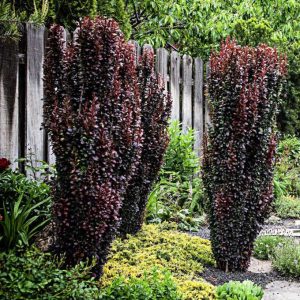
Helmond Pillar Barberry is an ornamental deciduous shrub that is native to Japan. It is slow growing and only reaches a height of 3-4 feet, with a spread of 2-3 feet. It is popular for gardens and landscaping due to its dense growth habit and vibrant summer foliage. The leaves are ovate-shaped and emerge green in spring before turning purple, red, and orange shades in summer. The flowers are small and yellow, blooming in clusters in early summer. The fruit is a small black berry that birds love. Helmond Pillar Barberry prefers full sun to partial shade and well-drained soil. It is a tough plant that is tolerant of drought, salt, and pollution. It can be pruned into a hedging plant or left to grow as a free-standing shrub. It is also resistant to deer, rabbits, and other pests. Seed, cuttings, or divisions can propagate Helmond Pillar barberry. It can be grown in USDA hardiness zones 4-8.
Native American Plum (Prunus Americana)
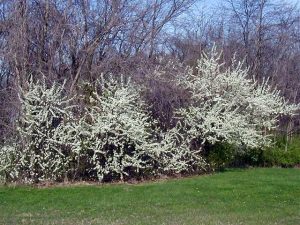
The native American plum (Prunus Americana) is a deciduous shrub that is part of the rose family. It is native to North America and can be found in the eastern United States and Canada. It typically grows to 15 feet and has a spreading habit. The leaves are ovate-shaped and have a serrated margin. They are dark green and turn yellow or crimson in the fall. The shrub produces white or pale pink flowers in the spring, followed by small, red plums in the summer. The plums are edible and can be used for making jam or pies. The native American plum is a hardy plant that does not require much maintenance. It prefers full sun but can also grow in partial shade. It is drought-tolerant and does not require much watering once it is established. To grow a native American plum, start with a seedling or cutting from another plant. Plant the seedling in well-drained soil in an area that gets full sun. Water regularly until the plant is established, then taper off once a week or as needed. Fertilize in the spring with an all-purpose fertilizer. Prune as needed to shape the plant or remove damaged branches.
Brandywine Crabapple (Malus Brandywine)

The Brandywine Crabapple is a deciduous tree that typically grows to 15-20 feet. It has a spreading crown and crooked branches. The bark is smooth and reddish-brown. The leaves are oval-shaped and 2-4 inches long. They are dark green and turn yellow or red in the fall. The flowers are white or pinkish-white and appear in early spring before the leaves unfold. The fruit is small, round, and reddish-purple. It ripens in late summer or early fall.
The Brandywine Crabapple tree is native to the eastern United States. It prefers full sun and moist, well-drained soil. It is tolerant of urban pollution and salt spray. It can be planted as a specimen tree or used in mass plantings, hedges, or screens. Crabapples are also a popular bonsai subject. Trees should be pruned when they are young to develop a strong structure. Older trees can be pruned to remove dead wood and to shape them into desired forms.
Northern Red Oak (Quercus rubra)
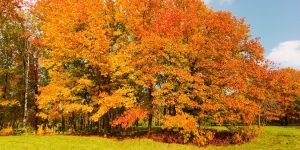
The Northern red oak (Quercus rubra) is a large deciduous tree that is native to North America. It grows to a height of 50-80 feet and has a spreading, rounded crown. The bark is dark brown or red-brown and scaly, with deep fissures. The leaves are Alternate, simple, and obovate in shape with coarse saw-toothed margins. They are 6-8 inches long and 3-4 inches wide. In fall, the leaves turn a beautiful red hue. The acorns are oval and 1-2 inches long, with a deep cup that covers half of the nut. They take two years to mature and are an important food source for many animals, including deer, squirrels, and mice. The Northern Red Oak is a popular ornamental plant. It is widely planted in parks and gardens due to its stately appearance and its ability to thrive in a wide range of climates.
To grow a Northern red oak, start by planting the acorns in fall in a sunny location with well-drained soil. Water regularly to keep the soil moist but not soggy. Once the trees reach 4-5 feet tall, they can be transplanted to their permanent location. Space the trees 20-30 feet apart to allow for proper growth. Fertilize annually with a balanced fertilizer such as 10-10-10. For best results, have your soil tested before fertilizing to determine its nutrient needs. Northern red oaks are low maintenance and resistant to common pests and diseases. However, they can be susceptible to oak wilt, spread by beetles that feed on the tree sap. Contact a certified arborist for diagnosis and treatment options if you notice your tree wilting or shedding leaves prematurely. Your Northern red oak will provide beauty and shade for many years with proper care!
Armstrong Red Maple
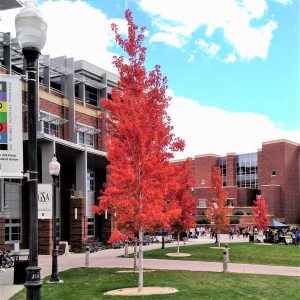
The Armstrong Red Maple is a hybrid of Silver and Red Maple. It was created by Dr. Edwin B. Armstrong of the University of Minnesota in 1932. The Armstrong Red Maple is a deciduous tree that typically reaches a height of 20-30 feet and a width of 15-20 feet. The leaves of the Armstrong Red Maple are medium-sized, with three to five lobes. They are dark green and turn a bright red in the fall. The bark is reddish-brown, smooth, and thick. The Armstrong Red Maple blooms in the spring with small, red flowers that grow in clusters. The fruit of the tree is a small, red samara that ripens in the summer.
To grow an Armstrong Red Maple, start by planting the tree in an area that receives full sun. The tree prefers soil that is rich in organic matter and well-drained. Water the tree regularly during its first growing season to help it establish a deep root system. Once established, the Armstrong Red Maple is relatively drought-tolerant. Fertilize the tree in early spring with a balanced fertilizer once a year. Prune the tree as needed to shape it and remove any damaged or diseased limbs. With proper care, the Armstrong Red Maple will thrive and provide years of beauty to your landscape.
Lavender Chiffon Rose of Sharon (Hibiscus syriacus)
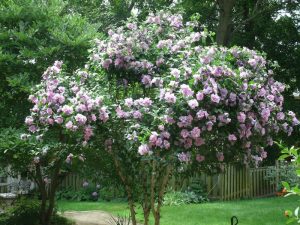
The Lavender Chiffon Rose of Sharon (Hibiscus syriacus) is a deciduous shrub native to China. It typically grows about 3-6 feet tall and 4-8 feet wide, although it can occasionally reach up to 12 feet tall. The Lavender Chiffon Rose of Sharon has large, lavender-pink flowers that bloom from July to September. The flowers are about 5 inches in diameter and have a ruffled appearance. The shrub leaves are dark green and glossy, and they turn yellow or reddish-purple in the fall. The Lavender Chiffon Rose of Sharon is an easy plant to care for and is tolerant of full sun and partial shade. It does best in well-drained soil, but it will also tolerate clay or sand. The Lavender Chiffon Rose of Sharon is an excellent ornamental plant for gardens, borders, and foundation planting. It is also a good choice for naturalized areas or as a hedge plant.
Imperial Honey Locust (Gleditsia triacanthos)
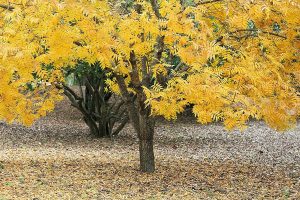
The Imperial honey locust (Gleditsia triacanthos) is a deciduous tree that is native to North America. It grows to a height of 50-75 feet and has a spread of 30-50 feet. The leaves are compound, with each leaf consisting of 15-20 leaflets. The flowers are small and greenish-white, and they are borne in clusters. The fruit is a dark brown pod that is 3-6 inches long. The seeds are black and glossy and contained in a sweet, edible pulp. The Imperial honey locust is a popular ornamental plant because of its hardiness, drought tolerance, and fast growth rate. It can be planted in a variety of soil types and prefers full sun. It is tolerant of cold winters and hot summers. The Imperial honey locust makes an excellent shade tree and can be used as a privacy screen or windbreak. It is also tolerant of salt spray, making it an ideal choice for planting near coastal areas.
River Birch (Betula nigra)
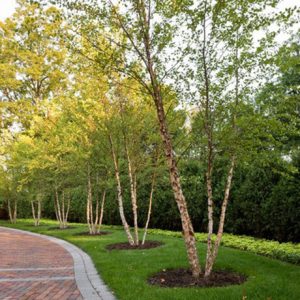
River birch (Betula nigra) is a deciduous tree that is native to the southeastern United States. It typically grows to a height of 50-70 feet and has a distinctive pyramidal shape. The leaves are ovate-shaped and have a double-toothed margin. They are dark green and turn yellow or bronze in the fall. The tree produces small, brown cones that contain three 500 18 Ovulate scales. The bark is reddish-brown and exfoliates in thin, papery sheets. River birch is an adaptable tree that can tolerate a wide range of growing conditions. It prefers moist, well-drained soils but can also tolerate periods of drought. It is also resistant to salt and pollution, making it an ideal ornamental plant for urban areas. River birch is also a good choice for wildlife gardens as it provides food and shelter for birds and small animals.
Cardinal Royal Mountain Ash (Sorbus aucuparia)
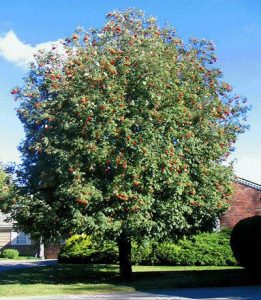
The Cardinal Royal Mountain Ash (Sorbus aucuparia) is a deciduous tree that is native to Europe and Asia. It typically grows to a height of 15-25 feet and has a spread of 10-20 feet. The tree has dark green leaves that are alternate, simple, and obovate. The leaves are 3-6 inches long and 2-4 inches wide. The tree’s flowers are white or ivory and grow in dense clusters. The fruit of the tree is red or orange, and it grows in clusters of 1-5 berries. The berries are 1/2 inch in diameter and contain a single seed. The Cardinal Royal Mountain Ash is a good ornamental plant because it is relatively easy to care for and has attractive flowers and fruit. The tree does well in full sun or partial shade and prefers moist, well-drained soil. It is tolerant of urban pollution and salt spray, making it a good choice for planting near roads or coastal areas. Cardinal Royal Mountain Ashes are also resistant to deer browsing, making them a good choice for gardens in areas where deer are abundant.

